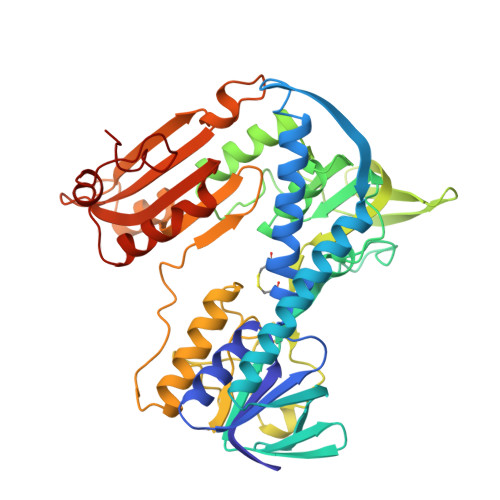Structure of glutathione reductase from Escherichia coli at 1.86 A resolution: comparison with the enzyme from human erythrocytes.
Mittl, P.R., Schulz, G.E.(1994) Protein Sci 3: 799-809
- PubMed: 8061609
- DOI: https://doi.org/10.1002/pro.5560030509
- Primary Citation of Related Structures:
1GER - PubMed Abstract:
The crystal structure of the dimeric flavoenzyme glutathione reductase from Escherichia coli was determined and refined to an R-factor of 16.8% at 1.86 A resolution. The molecular 2-fold axis of the dimer is local but very close to a possible crystallographic 2-fold axis; the slight asymmetry could be rationalized from the packing contacts. The 2 crystallographically independent subunits of the dimer are virtually identical, yielding no structural clue on possible cooperativity. The structure was compared with the well-known structure of the homologous enzyme from human erythrocytes with 52% sequence identity. Significant differences were found at the dimer interface, where the human enzyme has a disulfide bridge, whereas the E. coli enzyme has an antiparallel beta-sheet connecting the subunits. The differences at the glutathione binding site and in particular a deformation caused by a Leu-Ile exchange indicate why the E. coli enzyme accepts trypanothione much better than the human enzyme. The reported structure provides a frame for explaining numerous published engineering results in detail and for guiding further ones.
Organizational Affiliation:
Institut für Organische Chemie und Biochemie, Albert-Ludwigs-Universität, Freiburg, Germany.















